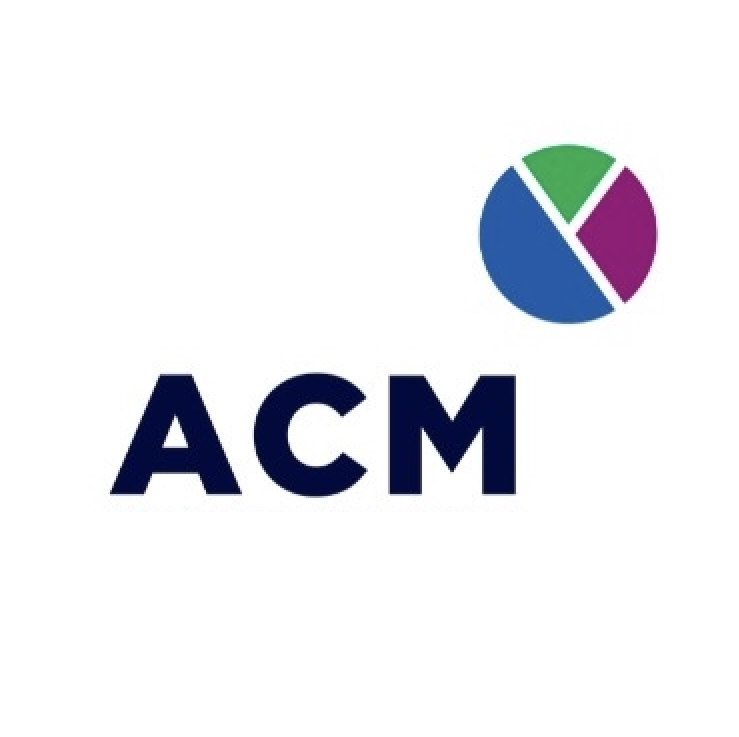
Profitability of an SME: Keys to Profitable Growth
Key takeaway: The profitability of your SME is the cornerstone of its sustainability. Understanding this strategic lever allows you to weather crises and innovate. According to a Bpifrance survey, 68% of SMEs report a decline in profitability. Discover our business financial management advisory service to take action.
Your SME is running at full speed—but where are your profits going? Did you know that one in three businesses fail due to poor profitability management? Between variable costs and tight margins, profitability is a critical challenge for SMEs. In this article, learn how to turn your numbers into strategic levers through key ratios—net margin, return on assets, break-even point—and discover concrete ways to optimize your costs and pricing. You’ll find proven methods to stop leaving growth to chance, with practical examples to move from theory to action, like a financial GPS for your business.
1- Profitability of your SME: More than just a financial indicator
2- Key concepts to distinguish for accurate analysis
3- How to measure the profitability of your SME: the ratios you must master
4- The break-even point: your compass to stop navigating blindly
5- Boosting SME profitability: practical levers for action
6- Your roadmap to controlled profitability
Profitability of your SME: More than just a financial indicator

Are your sales increasing? That’s a good start. But is your SME truly profitable? Profitability measures your ability to generate profit after covering your expenses—rent, salaries, and suppliers. It’s the key indicator of your company’s financial health and long-term viability. For example, a Canadian SME with $100,000 in revenue and $90,000 in costs achieves a 10% profitability rate—a key metric for growth.
Ignoring your profitability is like steering a ship without a compass. It determines your capacity to invest in innovation, weather economic downturns, and ensure long-term sustainability. A profitable SME can reinvest in growth and attract partners. Conversely, a narrow margin or deficit may hide fragility behind substantial revenues. According to a BDC study, one in three Canadian SMEs struggles to achieve profitability above 7%, limiting their resilience in the face of uncertainty.
In this article, you’ll find a practical roadmap to dissect your profitability. We’ll explore essential financial ratios, such as EBITDA or net margin, and strategies to cut costs through supplier negotiation or inventory optimization, as well as levers to improve your break-even point. Ready to turn profitability into a strategic asset? Follow this step-by-step guide toward smarter decisions.
Key concepts to distinguish for accurate analysis
Don’t confuse profitability, solvency, and liquidity
Understanding the differences between these concepts is essential for balanced management. Though interconnected, these three pillars serve distinct purposes.
Profitability is your company’s engine. It measures its ability to generate profit from sales or assets.
Example: Selling at $100 with $80 in costs = 20% net margin. Healthy profitability allows reinvestment.
Solvency is your company’s framework, ensuring long-term debt repayment.
Example: $500,000 in assets vs. $300,000 in debt = solvency. An imbalance weakens the structure.
Liquidity is the fuel that keeps you moving. It reflects your ability to pay short-term obligations.
A profitable company without liquidity risks bankruptcy like a brand-new car without gas: it won’t run.
To secure the future of your SME, balance these three pillars. A long-term strategy must integrate all of them.
Why low profitability hinders growth
Weak profitability creates a vicious cycle. According to Bpifrance, declining profitability weighs on investment. 41% of SME leaders cite it as a direct obstacle, limiting modernization, hiring, and innovation.
This lack of margin also restricts access to financing. In Canada, SMEs in trade or transportation face less favorable lending conditions. In French Guiana, interest rates stand at 3.7%, compared to 1.9% in mainland France, further deepening regional disparities.
How to measure your SME’s profitability: the ratios to master

The three financial ratios every business owner must know
To manage your SME effectively, financial ratios turn your figures into actionable insights. Here are three key metrics to monitor for evaluating the efficiency of your operations. These tools empower you to make informed decisions—whether you’re in retail, services, or manufacturing.
| Ratio | Calculation Formula | What It Tells You |
|---|---|---|
| Net Profit Margin | (Net Income / Revenue) x 100 | The percentage of each dollar in sales that turns into profit after all expenses. For example, a net income of $25,000 on $200,000 in revenue gives a 12.5% margin — a healthy benchmark for the professional services sector in Canada. |
| Return on Assets (ROA) | (Net Income / Total Assets) x 100 | Your ability to generate profit using your equipment, buildings, and assets. A 10% ROA means that each dollar in assets generates 10 cents in profit — a good benchmark for a technology company. |
| Return on Equity (ROE) | (Net Income / Shareholders’ Equity) x 100 | The performance of each dollar invested by you or your shareholders. A 15% ROE indicates efficient use of equity capital — a realistic target for a growing SME. |
Interpreting the Numbers to Make the Right Decisions
Ratios alone are not enough. You must analyze their trends over several months and compare them with industry averages. An 8% margin may be expected in retail but is insufficient in professional services. Tools such as BDC’s Industry Benchmarks provide references tailored to your business sector.
A declining ROA (Return on Assets) may indicate underused assets or poorly aligned investments. A rising ROE (Return on Equity) suggests that your financing strategies are yielding positive results. For example, a restaurant owner can improve their ROA by leasing seasonal equipment instead of buying it, freeing up capital for other projects.
To take it a step further, learn how to manage your SME using a dashboard of key indicators. These ratios form its foundation, enabling you to react quickly to trends. Cross-referencing them with solvency indicators, such as those available from RSM Canada, strengthens your financial outlook.
The Break-Even Point: Your Compass to Stop Navigating Blindly
What Is the Break-Even Point (or “Dead Point”)?
The break-even point is the minimum revenue your business must generate to cover its fixed and variable expenses. At that point, you’re not losing money—but not yet making any either. It’s a key indicator of your SME’s viability. Example: A Quebec furniture SME needs to reach $120,000 in sales to cover rent and materials. Furthermore, every additional sale generates a profit.
Distinguish Between Fixed and Variable Costs for Accurate Calculation
To calculate it, classify your expenses correctly.
- Fixed costs remain constant (e.g., rent, salaries).
- Variable costs fluctuate with activity (e.g., raw materials, commissions).
Typical fixed costs: rent, software subscriptions, insurance. Standard variable costs: material purchases, delivery fees.
This distinction helps you anticipate risks: high fixed costs can weaken your cash flow in the event of a downturn, while optimized variable costs enhance flexibility.
Example: A Montreal café cuts supply costs by choosing regional suppliers.
How to Use the Break-Even Point as a Strategic Management Tool
The break-even point is not just a backward-looking metric—it guides your future decisions.
- Set realistic sales targets.
- Anticipate the impact of price reductions.
- Evaluate the risks of new investments (e.g., hiring).
By adjusting your pricing policy, you optimize your margin. Saving $1,000 in costs can equal $2,000 less in sales needed to break even.
Example: An Ontario SME saves 15% on logistics by pooling deliveries.
In short, your break-even point secures cash flow, reassures investors, and strengthens your business model. Integrate it into your daily management! Recalculate it regularly to reflect changes in fixed or variable costs.
Boosting SME Profitability: Concrete Action Levers

Cost and Price Optimization: The Fundamentals
An SME’s profitability largely depends on its ability to control expenses. A simple yet effective step is to renegotiate supplier contracts. According to a BDC study, a 5% reduction in purchasing costs can improve operating margins by 20%, which is twice the impact of an equivalent increase in revenue.
Pricing also plays a decisive role. A 1% price increase can generate twice the profit gain of a 1% cost reduction. However, this strategy requires a clear justification, such as added value, superior customer service, or product differentiation. Proven methods, as described here, demonstrate how to optimize margins without compromising growth.
Modern Levers for Sustainable and Competitive Profitability
Technology is transforming how SMEs optimize profitability. A CRM software, for example, centralizes customer data and automates repetitive tasks. Studies show that companies using a CRM see an average 15% increase in sales productivity, freeing up time for high-value activities.
Investing in team skills is equally crucial. Targeted training in budget management or digital tools improves operational efficiency. By increasing flexibility and precision, these skills enhance resilience in changing markets while reducing costly errors.
Examples of actionable levers:
- Process optimization: Identify and eliminate unnecessary steps in your operations to reduce waste.
- Targeted tech investments: Automate administrative tasks to free up your team’s time.
- Skill development: Train staff on tools such as Excel or management software to enhance their versatility.
- Customer analysis: Focus on the most profitable client segments using metrics such as Customer Lifetime Value (CLV).
Now that you have the keys—do you know how to apply them all? Let’s build your strategy together. A combined approach using modern tools and human expertise is the key to turning fixed costs into growth levers.
Your Roadmap to Controlled Profitability
You now have the tools to transform your SME’s profitability. By clearly distinguishing between profitability, solvency, and liquidity, you can identify your strengths and areas for improvement. By regularly calculating your key ratios (net margin, ROA, ROE), you turn data into strategic decisions. Your break-even point becomes your GPS for setting realistic goals and measuring progress.
1- Analyze: Clearly distinguish between profitability, solvency, and liquidity to understand your financial position.
2- Measure: Calculate and regularly monitor your net margin, return on assets (ROA), and return on equity (ROE).
3- Steer: Use your break-even point as a GPS to set objectives and guide strategic decisions.
4- Act: Implement concrete actions to optimize costs, pricing, processes, and technology, sustainably improving profits.
Theory is good—action is better. Ready to boost your SME’s financial performance? Let’s create a customized roadmap for profitable growth. Discover our business financial management advisory service and benefit from personalized support to reach your goals.
Your profitability reflects your strategy. Analyze costs, ratios, and your break-even point; act on pricing, technology, and processes to turn management into a growth engine.
Ready to take action? Discover our consulting service for a high-performing SME.
FAQ
What is the ideal profitability rate for a business?
For an SME, the ideal profitability rate varies depending on the industry and financial structure. Generally, a financial return (ROE – Return on Equity) of between 7% and 12% is considered healthy. However, some industries — such as technology or luxury — may aim for 20% to 30%, while others, like construction or transportation, often range between 4% and 8%.
The key is to compare your ratios with your industry benchmarks and identify trends: consistent improvement is often more valuable than a high but stagnant performance.
What are the main factors to monitor when assessing SME profitability?
To assess and manage your SME’s profitability, pay close attention to the following parameters:
1- Net profit margin (Net income / Revenue), which reflects overall efficiency.
2- Return on assets (ROA), measures how effectively your investments are used.
3- The break-even point serves as a guide to determine the minimum revenue required to cover all fixed costs.
4- Economic return (Operating income / (Equity + Debt)), to evaluate operational performance.
5- Financial return (ROE), to measure value creation for shareholders.
What are the four key ratios for assessing SME profitability?
The four key ratios for analyzing SME profitability are:
1- Net profit margin: (Net income / Revenue) × 100 — shows the share of sales converted into profit.
2- Return on assets (ROA): (Net income / Total assets) × 100 — measures efficiency in resource utilization.
3- Return on equity (ROE): (Net income / Shareholders’ equity) × 100 — evaluates the return on investment.
4- Break-even point: Fixed costs / Contribution margin ratio — your “magic number” to start generating profits.
What defines a healthy profitability ratio for an SME?
A healthy profitability ratio depends on your industry, but here are general benchmarks:
- A net profit margin above 5% is good; 10% or more is excellent.
- A ROA between 5% and 15% depending on the sector’s capital intensity.
- A ROE between 7% and 12% is solid; over 15% is outstanding.
- A break-even point reached before two-thirds of the fiscal year indicates strong financial flexibility.
Always compare your ratios with industry standards and focus on improving your own metrics over time rather than chasing static performance.
Is a 40% profit margin a good sign for an SME?
A 40% profit margin is an exceptional performance — far above average for most industries. It means that for every dollar of revenue, your SME earns $0.40 in profit. This shows a highly efficient cost structure or a very profitable business model. However, it’s essential to analyze this figure over time and compare it with other indicators, such as cash flow and growth. A high profit margin can sometimes hide underused assets or a lack of reinvestment for expansion.
What is considered a healthy net profit margin for an SME?
A healthy net profit margin usually ranges between 5% and 10% for SMEs, with significant variations by sector. A 10% margin is excellent in many industries, while anything below 3% signals it’s time to review your business model. For example, a net margin of 8% means that for every dollar in revenue, your company earns $0.08 in net profit. Track this figure quarterly to identify trends and compare it with those of direct competitors to adjust your strategy accordingly.
Is a price-to-earnings ratio (P/E) of 70 a good indicator for an SME?
A P/E ratio of 70 is relatively high and mostly relevant for publicly traded companies. For a private SME, this indicator is less meaningful, as it mainly reflects investor expectations rather than operational performance. Such a high ratio may suggest strong growth expectations, but it also raises the risk of a correction if results fall short. It’s better to focus on more concrete indicators, such as net profit margin or break-even point, unless you are planning a fundraising effort or a business sale.
Which type of profitability is most relevant to track for an SME?
You should primarily monitor economic profitability (Operating income/economic assets) and financial profitability (ROE). The first reflects your company’s operational efficiency, regardless of its financing structure, while the second demonstrates value creation for shareholders. Additionally, your break-even point, net margin, and fixed versus variable cost analysis provide immediate operational insights. Depending on your business, specific ratios such as inventory turnover or accounts receivable turnover can also be helpful. The goal is to track complementary indicators for a complete overview.
How should a 10% profit margin be interpreted for an SME?
A 10% profit margin means that for every dollar in revenue, your SME generates $0.10 in profit. This is generally considered beneficial for most industries, although some, such as retail, may aim higher. Analyze this number over time: steady growth is a strong indicator. Also, compare it to your opportunity costs: if you invest $100,000 in your business, a 10% profit represents a $10,000 net return. This helps you decide whether to reinvest, distribute dividends, or seek higher-yield opportunities.




